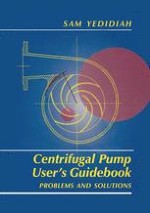1996 | Buch
Über dieses Buch
Specifically for the pump user, this book concentrates on the identification and solution of problems associated with existing centrifugal pumps. It gives specific examples on how to modify pump performance for increased efficiency and better quality control, which turn into long-term cost savings. Some basic theory is included to give the reader greater understanding of the problems being encountered and attacked.
Anzeige
